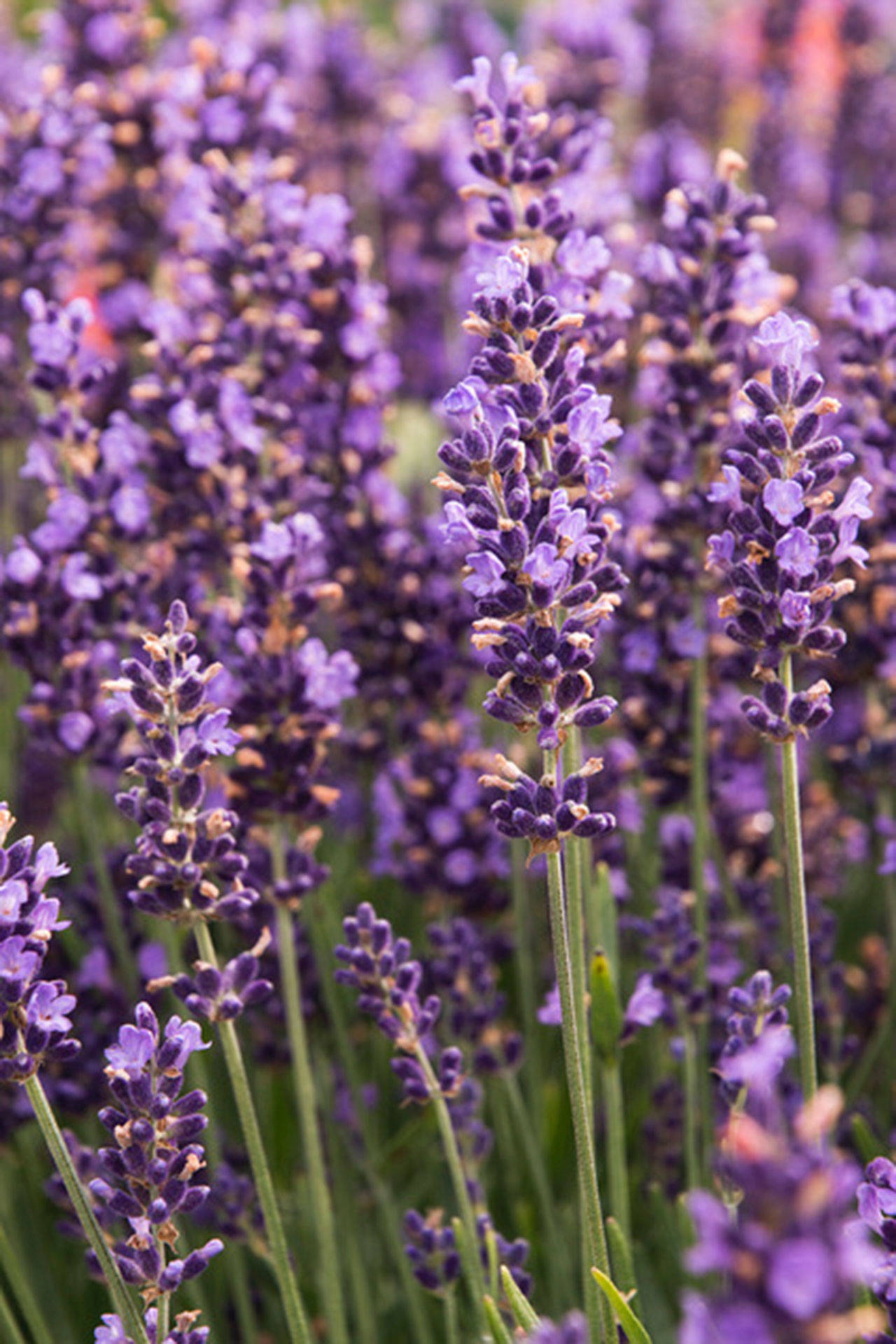By Steve Smith
I couldn’t help but notice the other day while driving around town that lavender was coming into bloom. That got me thinking about growing lavender, choosing varieties and how to actually use the plant other than just to look at it. Lavender has been in production for over 2,500 years, and there is quite a bit of information out there to share.
Lavender hails from Western Europe, close to the Mediterranean Sea, and likes a similar climate to ours, as long as its feet don’t get too wet in the winter. Well-draining soil is a must, full sun as well, and if you really want to pamper it, apply some lime once a year. Lavender is drought tolerant, once established, and deer resistant. The one and only drawback is that it can look like a plucked chicken coming out of winter and can be short lived if you give it too much mulch and fertilizer.
There is English, Spanish and French Lavender. By far English Lavender, and its many hybrids, are the most popular. I checked our inventory history, and we have carried over three dozen varieties over the years but in reality, one-half dozen or so is plenty to choose from. Here are three new flavors that just came in.
•Hidcote Superior — This is an English variety that is an improvement over the tried and true plain ‘Hidcote’. It is a compact form of the original, reaching only 12- to 14-inches tall, with deep, purple-blue flowers. Like all lavenders, it is fragrant, attracts butterflies and will repel insects. •Super Blue — According to Monrovia Nurseries, this variety has “fragrant wands of rich lavender-blue flowers that deliver a soothing scent in early and midsummer. Super Blue is perfect for borders or containers with neat, compact foliage. The large, full blooms are excellent for cutting and drying”. ‘Super Blue’ grows to 12- to 20-inches tall.
•Wings of Night — This is a Spanish variety that forms an erect, dense shrub 2- to 3-feet tall with narrow blue-grey leaves. It blooms through spring and summer with short clusters of lavender flowers, each topped by a crown of showy purple bracts (the bracts look like small butterflies perched on the end of the stock). Here are a few more interesting facts about lavender from the website “Lavender Sense”… The ancient Greeks called Lavender “nardus,” and it was one of the holy herbs mentioned in the bible in the ‘Song of Solomon’. Lavender derives its name from the Latin ‘lavare’ meaning ‘to wash”. The Romans used Lavender to scent their baths, beds, clothes and even hair.
The oil is extracted from the flowers and used as a disinfectant, an antiseptic, an anti-inflammatory and for aromatherapy. An infusion of Lavender is claimed to soothe and heal insect bites, sunburns and small cuts, burns and inflammatory conditions and even acne. Dried Lavender flowers are used extensively for their fragrance, specifically as herbal fillers inside sachets to freshen linens, closets and drawers. Lavender can also deliver a floral, slightly sweet, and elegant flavor to foods.
Lavender is also just plain nice to have in your garden, and this is the perfect time to find your favorite varieties.
Steve Smith is the owner of Sunnyside Nursery in Marysville and can be reached at info@sunnysidenursery.net


